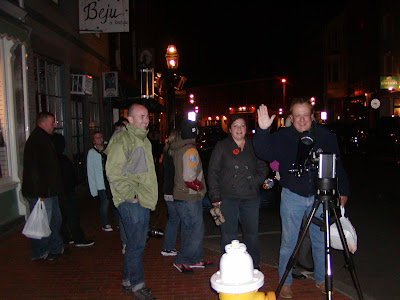
It's been a long time since I've posted, but tonight I am celebrating my first observation of the Lunar "X". This is an object visible only for one night a month. It is made up of the walls of several craters, and when the light is just right it makes a clear, bright "X". Here is a picture from Wikipedia showing the X, just as I saw it in the Celestron C6 refractor. You can see it on the left of the picture. Notice how the floors of the craters are dark but the walls make up the X by protruding into the sun's rays as they slant over the landscape. It is sunrise on the moon! Unfortunately the high winds we have had for a week have made the atmosphere very turbulent, so fine detail was hard to see.
I also looked at the double cluster in Perseus. This was less affected by the poor seeing, and the individual stars popped right out including the obvious red stars, both within and one special one between the two clusters.
The 16 degree temperature kept me from staying out too long, but it was fun while it lasted!





















